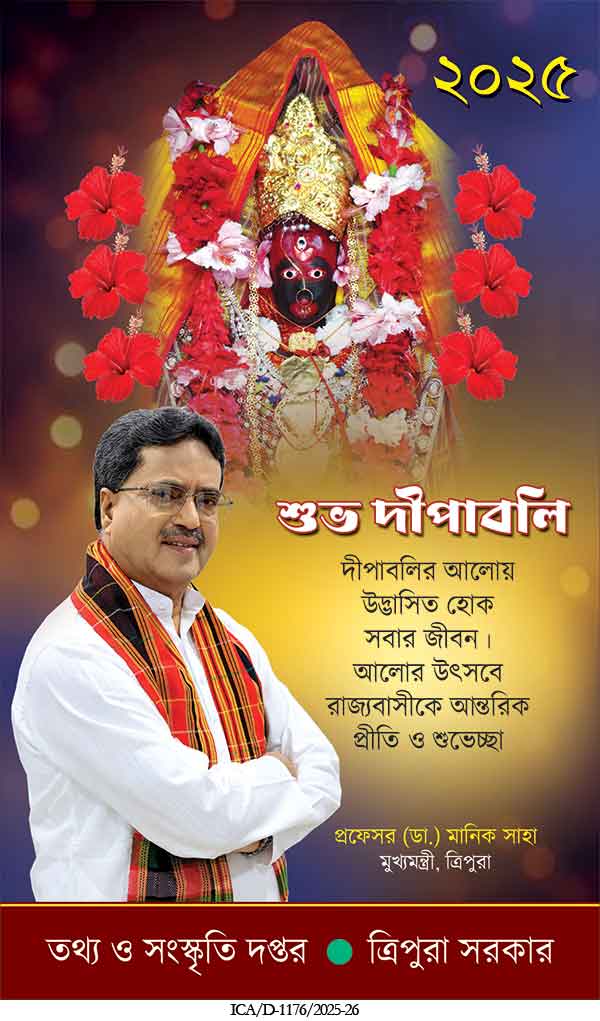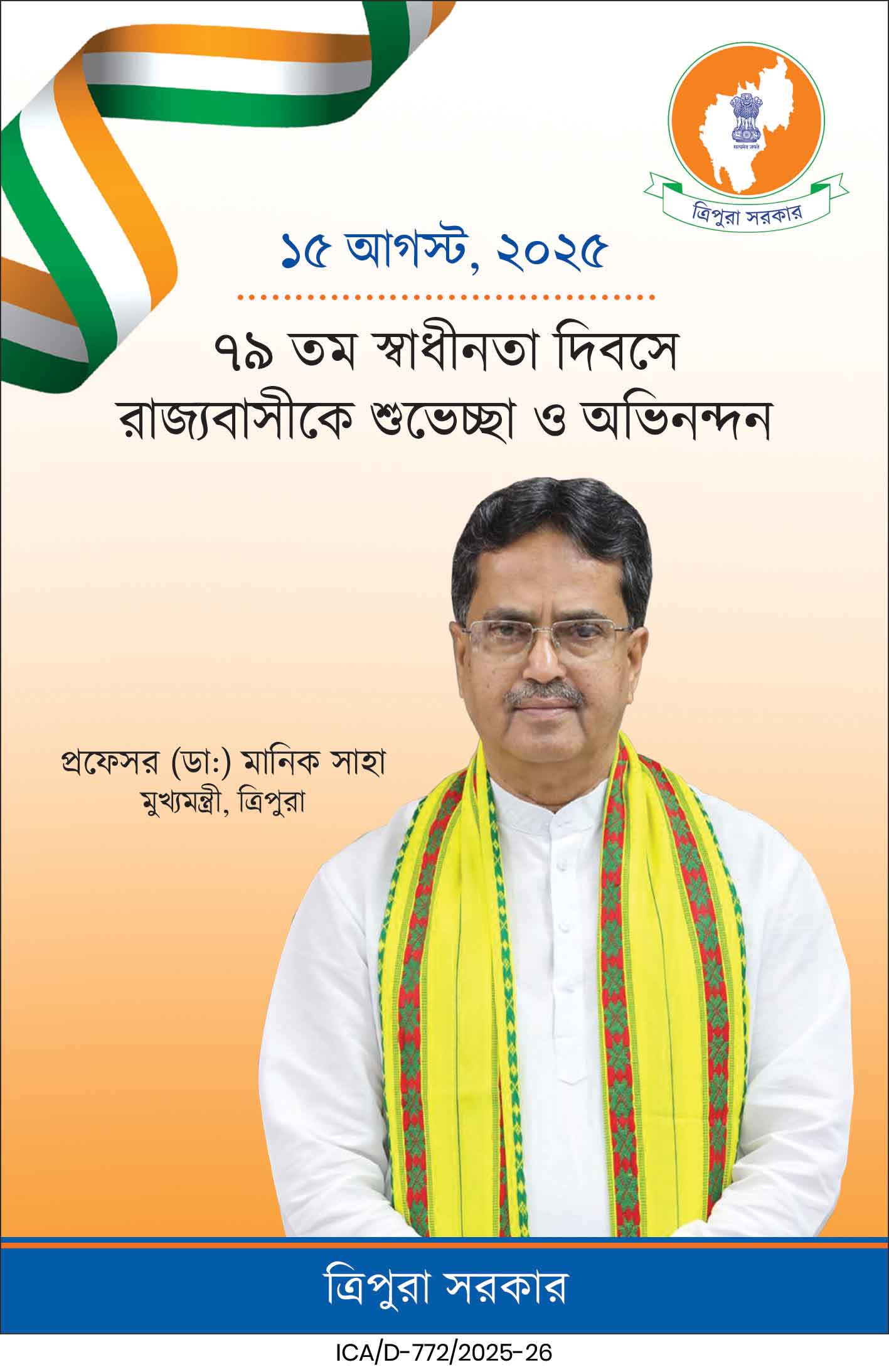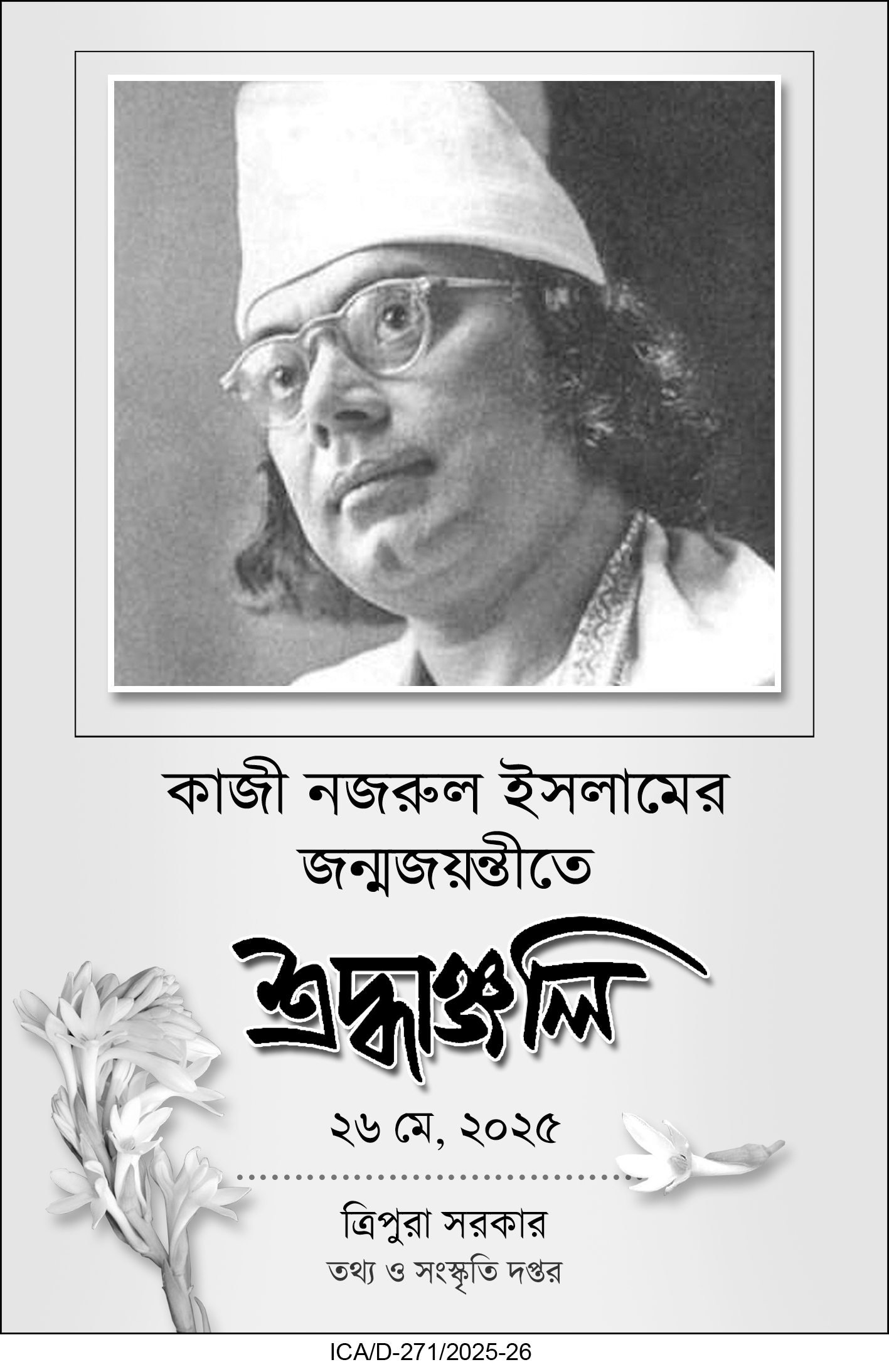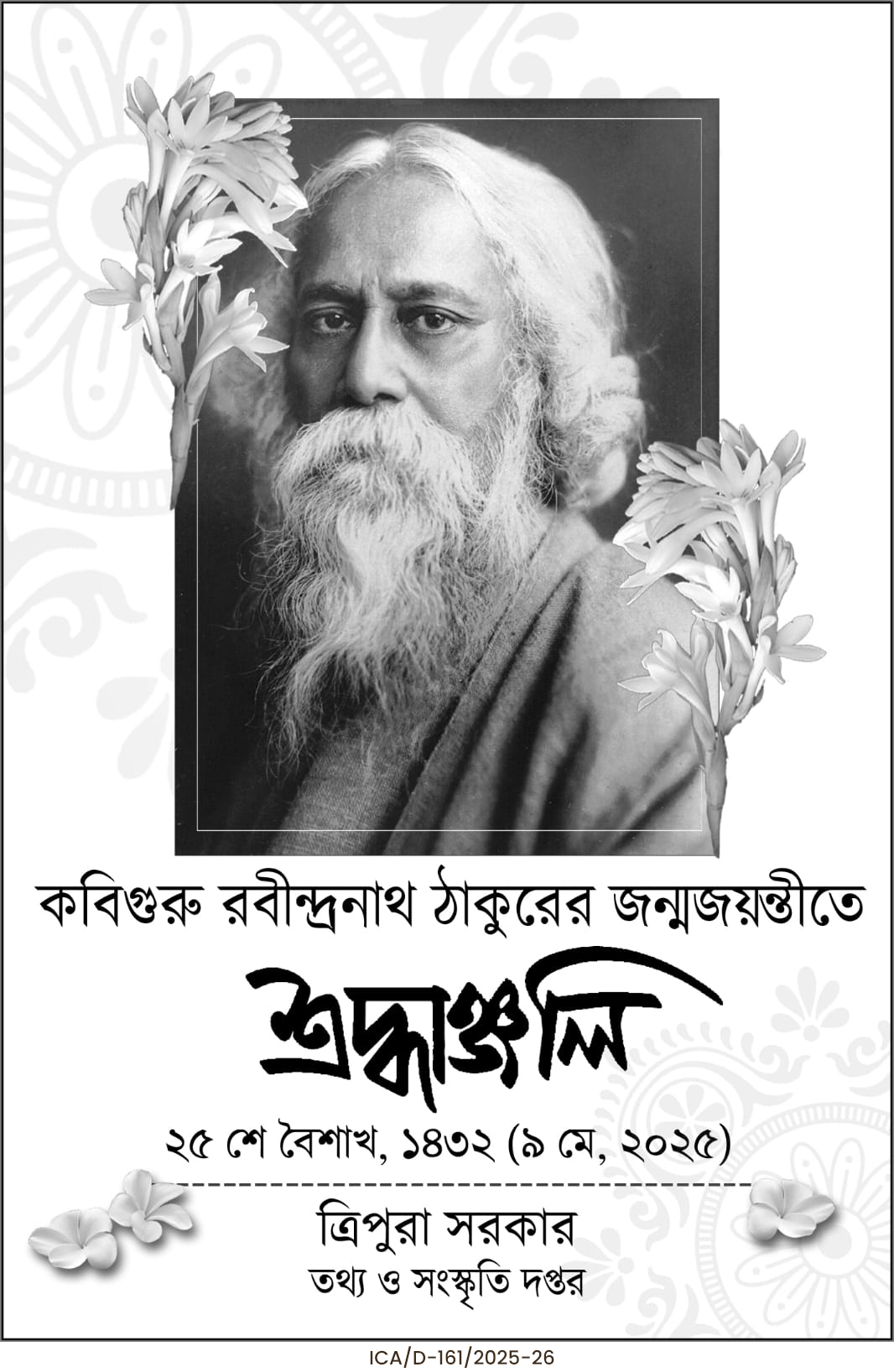
 Pradip Kumar Dutta
Pradip Kumar Dutta
Ila Mitra, the firebrand leader of the peasants was one of the greatest daughters of our soil. She comes from an aristocratic family of village Bagutia (present day Jhenidah district) of Jessore. Her father was the Deputy Accountant General of Bengal Presidency. Nagendranath Sen,her father was obviously posted at Calcutta where she was born in 1925. She had best of education in Calcutta and graduated from the famous Bethune College. Apart from being a brilliant student,she was an extraordinary athlete and sportsperson. She was selected to represent India in the 1940 Olympics in Japan. Unfortunately the Olympics was cancelled due to onset of WW2.
While studying, she was attracted to progressive political ideas and was slowly getting involved in Communist led movements. In 1943 she participated actively in the agitations against Rowell bill which was on Hindu Act. The next year she passed her B A examination. In 1945 at the age of 20 she got married to a Communist activist Ramendra Mitra,the son of a rich landlord of Ramchandrapur which was in remote Nachole under Rajshahi district. She shifted to Nachole and her association to the have nots started immediately. Ramen Mitra and his friend Altaf Mia started a school and requested her to take charge. She started with 3 children and within a year enrolled 52 more. Light of education started to spread in that remote place, mostly inhabited by minor ethnic group Santhals. They were poorest of the poor and were perpetually exploited by the jotedars,the landlords. Young Ila Mitra,imbibed with ideals of equality befriended these simple souls and started to teach them about their rights. All the Santhals of the area and poor Bengalis were subjects of the landlords including Ila Mitra’s own in laws. The peasants lovingly referred to her as their Rani Ma. The population of the area were all bargathers meaning land labourers. Though they worked in the same land for generations,they did not have any right on the land. Permanent Settlement act of the British made them virtual slaves of the jotedars/jaminders,who owned the title of vast expanses of land. After the famine of 1943,the financial position of the land tenants or bargathers worsened even further. The Communist Party of India started to organise the peasants under the umbrella of All India Kissan Sabha and in 1946 the Tebhaga movement started. So far,the landless peasants had to arrange all inputs for cultivation including seeds,labour,watering,manures,etc. In return they got only half of the produce. Tebhaga movement was launched to achieve a two third share of the produce for the bargadars. It is pertinent to mention here that the Floud Commission constituted by the government of Bengal to review the land revenue in Bengal Presidency has proposed a Bargadari act. The commission ruled that the permanent settlement was already outdated and the peasants should have legal protection and greater share of the produce. The government could not implement the Floud Commission report. The Kissan Sabha could organise the landless peasants from the Sundarbans in the south upto North Bengal covering the districts of 24 Parganas,Jessore,Mrshidabad,Malda,Rajshahi,Dinajpur,and Jalpaiguri. Tebhaga movement started gaining momentum under the leadership of communist leaders Haji Danesh,Charu Majumder,Ila Mitra, Kansari Halder,Noor Jalal and many others. Similar movements sprang up in other parts of Bengal namely,Tonk movement,Hajong uprising and Nankar rebellion. In many places,the Kissan Sabha committees succeeded and the jotedars had to give in to the logical and legitimate demand of the peasants. Unfortunately,due to the 1946 communal disturbances and subsequent partition of Bengal,the Tebhaga movement had to take a back seat and the subcontinent became independent of British rule. Pakistan and India were created. Ila Mitra and her husband decided to stay back in East Bengal,their home,which became a part of Pakistan.
Partial success of the peasants in their Tebhaga movement was short-lived and after the creation of Pakistan,in East Bengal the discontented peasants always tried to get themselves reorganised to achieve their rights on the land that they have tilled for generations and for higher share of crops as bargadars. The history has experienced various movements in different parts of East and West Bengal as well as other parts of the subcontinent mostly led by communist leaders and their left leaning supporters from 1946 upto 1953. At places,the mobs were violent and the landlords and their cronies took advantage of such situations to suppress the rightful demands of the masses with the help of state machinery. Such was the case of Nachole uprising. The Santhals of the area and the landless worker-peasants were getting organised and had all the blessings of their Rani Ma. The Nachole uprising broke out in the remote areas of Nachole and Rohanpur in 1949.Landless peasants,mostly Santhals became violent as they were continuously being denied their rights. Rani Ma Ila Mitra was the source of inspiration of the movement. She led the uprising from the front. Even the Santhal ladies were active in the demonstrations. Though the then banned Communist party was the organiser of the movement and the peasants had the support of Awami League and Krishak Praja Party,the ruling Muslim League sided with the landlords. Police forces of Pakistan were in action in support of the jotedars and there had been clashes with the police at different places. Reportedly a few policemen were injured and a couple of them died. The casualties on the revolting peasants side were much more. But the government became ruthless. A force of 2000 Pakistanis were deployed in the area. They promulgated a reign of terror in the area. Torture on the demonstrators was unprecedented. By the beginning of 1950 the uprising was suppressed. Rani Ma had to go into hiding as a commoner. Police was combing the area to round her up. The Santhals tried their best to keep her safe. Unfortunately she finally was arrested by the police. They inflicted inhuman torture on her under custody at Rohanpur,Nachole,Nababgonj and finally at Rajshahi. She was exposed to such inhuman methods of torture by the Pakistani police that I dare not elaborate same. But this brave lady described every detail of the torture including rape in her statement to the court. She had to face trial for her alleged involvement in the anti state activities and was given life imprisonment. She was finally shifted to Dhaka central jail. Because of the physical torture, her health became fragile and in 1954 the then United Front government allowed her to travel to Calcutta on parole for treatment.
Meantime in 1951 East Bengal Land Acquisition and Tenancy Act was passed. This act limited the land holdings of landlords/jotedars,gave greater rights on the land to the peasants and arranged for payment of rentals on land use by the peasants in cash amounts fixed by government. Most of the Santhals by then have shifted to adjacent Indian territories to escape the police torture and reprisals. Alas! They could not reap the benefits of their movement.
Ila Mitra and Ramen Mitra never returned to East Pakistan.After treatment,she went back to studies and got her Master’s degree in 1958. Later she took up the noble profession of teaching. She retired as a Professor of Bengali from Calcutta City College in 1989. During our War of Liberation in 1971 she was very active supporting our cause in Calcutta. The writer had the unique privilege of meeting her once in Calcutta City College in 1971. My uncle was working in the Accounts Department of City college during that period.
She was active in Communist politics all the time in India as well. She had to suffer a lot due to anti incumbency political activities and was jailed several times even in India. At the same time she was a real hero in the eyes of the masses. She was elected a Member of the Legislative Assembly of West Bengal for four times.
The great leader breathed her last in Calcutta in 2002.
She received many laurels which crowned her legendary political career. Many institutions,roads, buildings and organisations bears her name to show honour to the brave heart.
During my recent visit to Nachole I was pleased to see that the local MP has erected a Ila Mitra Gate at the entry point of Nachole upazila along the Chapai Nababgonj- Amnura regional highway. A befitting mural of the great lady stands there to greet passers by. At Kendua Panchanan Government Primary school,near her in laws place we saw a concrete slab erected to accommodate the leader’s picture and her short biography. The main building of the school is named Ila Mitra Bhavan. We gathered that the people of the area still revers her and they observe their Rani Ma’s birthday every year with various socio cultural activities.
We hope and expect that the government will recognise the sacrifice of this great lady and name some major installation like a university or a major structure of the country after her.





